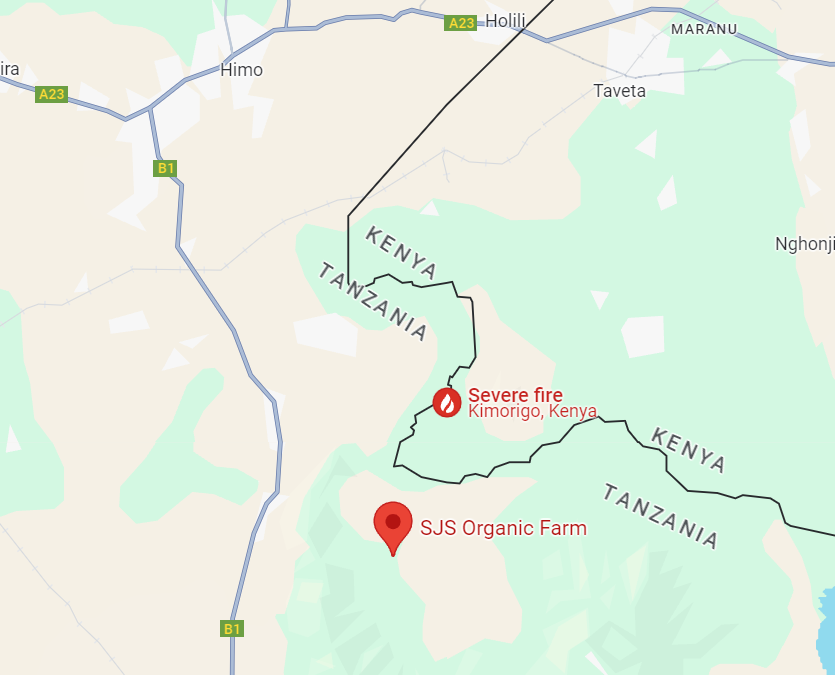One Acre Family Farm
The one-acre model at SJS Organic Center for Excellence demonstrates how small-scale farms can sustainably provide both food and income. By integrating various farming practices, this approach maximizes the potential of limited land to support families in Tanzania.
Understanding the One-Acre Farm Model
The SJS Organic Center for Excellence at Kwanyange has developed an innovative one-acre farm model tailored to meet the nutritional and economic needs of small-scale farmers. In Tanzania, where most farmers own an acre or less, this model provides a sustainable food system that ensures family nutrition while generating additional income. By integrating diverse agricultural components, smallholder farmers can enhance productivity, improve their livelihoods, and contribute to environmental conservation. With proper planning and gradual implementation, even the smallest landholders can transform their farms into productive and profitable ventures.
The Integrated Farming Approach
The one-acre farm model incorporates various agricultural technologies, including agroforestry, horticulture, animal husbandry, fisheries, field crops, and cash crops. Each component plays a vital role in creating a self-sustaining and highly productive farming system.
Livestock integration—such as cows, goats, rabbits, chickens, and fish—provides essential organic inputs like cow dung, urine, goat and rabbit pellets, and fish waste. These inputs enhance soil fertility, improve yields, reduce production costs, and ensure long-term sustainability.
Key Elements of the One-Acre Farm
Bio-Fencing and Agroforestry: The farm is enclosed using bio-fencing materials such as bamboo and other locally available resources for security and protection. Trees—including fruit trees, medicinal plants, repellent trees, and timber trees—are planted along the edges, offering multiple benefits to both the ecosystem and the farmer.
Gradual Development and Investment: Farmers can start small and expand gradually. Priority is given to livestock integration, ensuring a continuous supply of organic inputs. A small vegetable nursery can be established, with the first harvest ready in about 45 days, providing both food and income. As the farm develops, field crops, cash crops like bananas, and other staple crops can be introduced.
Knowledge Dissemination and Farm Experience
SJS Organic Farm offers hands-on training and experiential learning opportunities, including:
One-Week Training on the one-acre farm model.
Guided Farm Tours to provide visitors with in-depth insights into sustainable farming.
Organic Meal Experience, where guests can enjoy fresh, organic meals in an eco-friendly setting, showcasing the farm’s produce.
Field Attachments and Research for students and professionals interested in organic farming.
Adoption of the One-Acre Model as a knowledge product available for purchase by organizations.
For more information or to participate in our programs, contact us today!
Income Streams from the One-Acre Farm
Short-Term Income: Fast-yielding activities like vegetable farming and livestock products (milk, eggs, manure, and meat) provide daily or weekly revenue for household needs.
Mid-Term Income: Field crops and seasonal cash crops such as cereals and legumes generate returns within a year or two, supporting medium-term financial stability.
Long-Term Income: High-value trees like mahogany ensure significant financial returns after 10 to 15 years, securing long-term financial sustainability while contributing to environmental conservation.
Kalpataru Vegetable Model (ATM Model – Any Time Money)
SJS Organic Farm has implemented the Kalpataru Vegetable Model (Pesa Mkononi), an approach that ensures a continuous and diversified income stream for farmers. By cultivating a variety of vegetables in a staggered manner throughout the year, farmers can harvest and sell produce regularly—akin to withdrawing money from an ATM. This model emphasizes soil health through organic practices, integrates multi-layer cropping for land optimization, and promotes biodiversity to enhance resilience. By ensuring a steady supply of fresh produce for household consumption and market sales, it strengthens food security and economic stability.
Alternate Wetting and Drying (AWD) in Paddy Cultivation
The one-acre farm incorporates the Alternate Wetting and Drying (AWD) method in its paddy fields. This technique conserves water while reducing methane emissions, making rice farming more sustainable and environmentally friendly.
Sustainability and Cost Efficiency
The one-acre farm model promotes sustainability by enriching soil fertility through organic inputs, thereby minimizing external input costs. This method enhances productivity while ensuring resilience to climate change and market fluctuations.
Organic Formulations for Soil Fertility
SJS Organic Farm incorporates organic formulations like Gocripa, Ambrutha, Pachagavia, Angestia, and Jeevamritha into its training programs. These natural fertilizers enhance soil fertility, boost crop yields, and reduce reliance on synthetic chemicals. By enriching soil with essential nutrients and promoting microbial activity, they support sustainable farming practices. Farmers learn to prepare and apply these formulations, improving productivity while maintaining ecological balance. This approach not only enhances food security but also preserves soil health for future generations, making organic farming more resilient and environmentally friendly.

UN SDG's Goals
1. Zero Hunger (SDG 2) – The one-acre farm promotes healthy and nutritious food production, helping to mitigate hunger.
2. No Poverty (SDG 1) – The farm model provides job opportunities in agriculture, helping to eradicate poverty through organic farming.
3. Good Health & Well-Being (SDG 3) – By cultivating organic food, families benefit from nutritious diets that improve health and well-being.
4. Responsible Consumption & Production (SDG 12) – The one-acre farm encourages sustainable production, utilizing available resources efficiently and practicing zero waste.
5. Climate Action (SDG 13) – The model promotes eco-friendly farming practices like soil conservation and reducing carbon emissions.
6. Life on Land (SDG 15) – The farm helps protect ecosystems, combat desertification, prevent land degradation, and promote biodiversity conservation.







